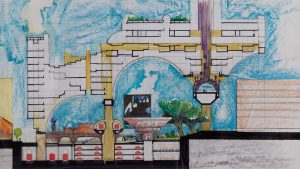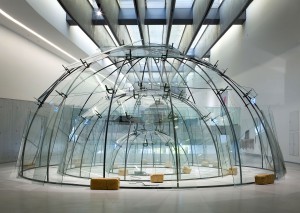- special reduced price € 10
single ticket valid until 17 April, for all ongoing exhibitions, due to the refurbishment of 2 galleries
- full price € 15 at the box office - € 14 online
- reduced price € 12 at the box office - € 11 online
for young people aged between 18 and 25 (not yet turned 25); for groups of 15 people or more; La Galleria Nazionale, Museo Ebraico di Roma ticket holders; upon presentation of ID card or badge: Accademia Costume & Moda, Accademia Fotografica, Biblioteche di Roma, Centro Sperimentale di Cinematografia, Enel (for badge holder and accompanying person), FAI – Fondo Ambiente Italiano, Feltrinelli, Gruppo FS, IN/ARCH – Istituto Nazionale di Architettura, Sapienza Università di Roma, LAZIOcrea, Palazzo delle Esposizioni, Amici di Palazzo Strozzi, Accademia Nazionale di Santa Cecilia, Scuola Internazionale di Comics, Teatro Olimpico, Teatro dell’Opera di Roma, Teatro di Roma, Università degli Studi di Roma Tor Vergata, Youthcard; upon presenting at the ticket office a Trenitalia ticket to Rome purchased between 27 November 2024 and 21 April 2025
- open € 18
valid for one year from the date of purchase
- free
minors under 18 years of age; upon presentation of disability card or accompanying letter from hosting association/institution for: people with disabilities and accompanying person, people on the autistic spectrum and accompanying person, deaf people, people with cognitive disabilities and complex communication needs and their caregivers, people with serious illnesses and their caregivers, guests of first aid and anti-violence centres and accompanying operators, residents of therapeutic communities and accompanying operators; EU Disability Card holders and accompanying person; MiC employees; myMAXXI cardholders; registered journalists with a valid ID card; European Union tour guides and tour guides, licensed (ref. Circular n.20/2016 DG-Museums); 1 teacher for every 10 students; AMACI members; CIMAM – International Committee for Museums and Collections of Modern Art members; ICOM members; journalists (who can prove their business activity); European Union students and university researchers in art history and architecture, public fine arts academies (AFAM registered) students and Temple University Rome Campus students from Tuesday to Friday (excluding holidays); IED – Istituto Europeo di Design professors, NABA – Nuova Accademia di Belle Arti professors, RUFA – Rome University of Fine Arts professors; upon presentation of ID card or badge: Collezione Peggy Guggenheim a Venezia, Castello di Rivoli Museo d’Arte Contemporanea, Sotheby’s Preferred, MEP – Maison Européenne de la Photographie; on your birthday presenting an identity document
Casa Balla | until 27 April 2025
- full price ticket € 18
- reduced price ticket € 15
for groups of 12 people in the same tour; myMAXXI membership card-holders; registered journalists with valid ID
- reduced price ticket € 12
under 14 years of age
- free ticket
disabled people + possible accompanying person; minors under 3 years of age (ticket not required)
Collection
MAXXI’s Collection of Art and Architecture represents the founding element of the museum and defines its identity. Since October 2015, it has been on display with different arrangements of works.
other upcoming events
23 Mar 2025 04.00 pm
musicElectronic ExpressionsApogeo
23 Mar 2025 05.00 pm
CreAzioneThe Brutalistby Brady Corbet
25 Mar 2025 06.00 pm
stories of artLecture on yellowwith Angela Vettese
27 Mar 2025 07.00 pm
Le ConversazioniPupi Avatiwith Antonio Monda
30 Mar 2025 04.00 pm
musicElectronic ExpressionsMateria
30 Mar 2025 05.00 pm
CreAzioneLeopardiby Mario Martone






















































Film Series
June 11-20, 2010
MAXXI, Auditorium
Trained as director, studying cinematography at UCLA of Los Angeles, Kutlug Ataman made his first feature-length film, Serpent’s Tale, in 1994. Since 1997, when he took part in the Istanbul Biennal with the video kutlug ataman’s semiha b. unplugged, the artist has alternated cinematographic and artistic activity. This film programme, the first one dedicated to him, shows all his movies in original language, with Italian and English subtitles.
Serpent’s Tale
Turkey, 1994, 85’
Considered by international critics the best horror movie ever produced in Turkey, this is Ataman’s first feature film. When opportunely translated, an ancient manuscript reveals the secret to eternal life. Many who wish to claim it for their own: a Byzantine princess, who appears as a baby vampire, and a multinational company. The price for obtaining the manuscript is very high.
Lola + Bilidikid (director’s cut)
Germany, 1999/2006, 85’
The film tells the story of Murat, a seventeen-year-old Turk living in Berlin. The young boy discovers his homosexuality, and meets a transvestite named Lola and his boyfriend, Bilidikid. It is a fresh look inside Berlin’s Turkish community, trapped between a culturally inherited homophobia and the racism of a few Germans. Between humour and tragedy, Ataman continues his cinematic research into marginalisation, removal and identity.
2 Girls
Turkey, 2005, 100’
The film tells the story of the intense and exclusive relationship between two adolescent girls, Hadan and Behiye, against the backdrop of a rapidly changing Turkish society. Adapted from the best seller by the Turkish novelist Perihan Magden, also the film’s scriptwriter, 2 Girls created a national scandal for its opening scene and for its realistic depiction of metropolitan Turkish life.
Journey to The Moon
Turkey, 2009, 79’
Filmed in the south-eastern province of Erzincan, from which Ataman’s family originally hails, Journey to the Moon is part of the Mesopotamian Dramaturgies and exists in two versions: for installation and for the cinema. Very different from his previous feature films, it tells the tragicomic story of the attempt by a handful of villagers to travel to the Moon at the end of the 1950s, alternating sequences of black and white photographs and interviews with various Turkish intellectuals.